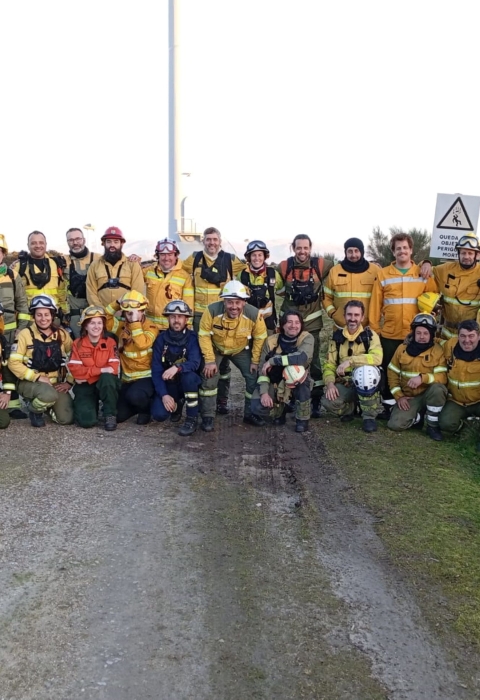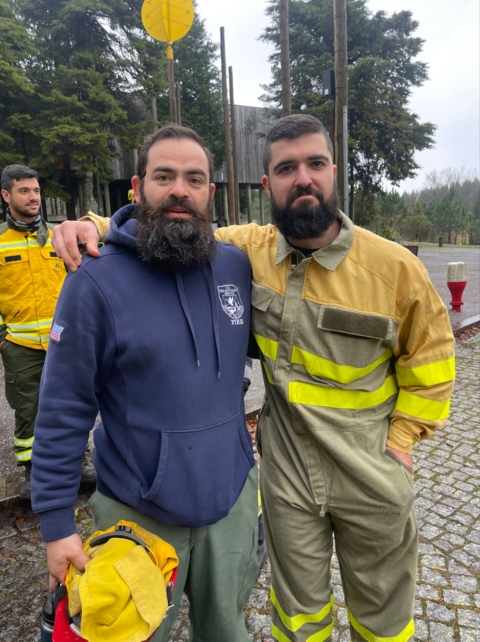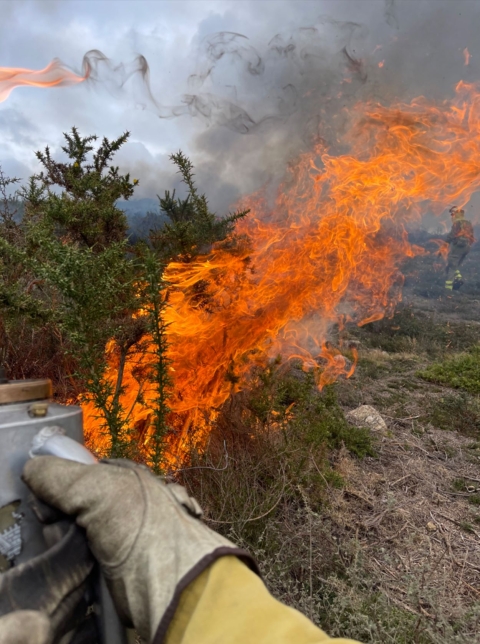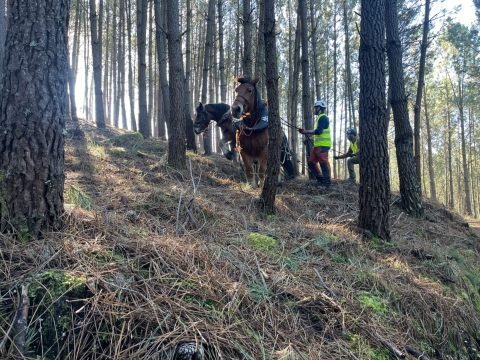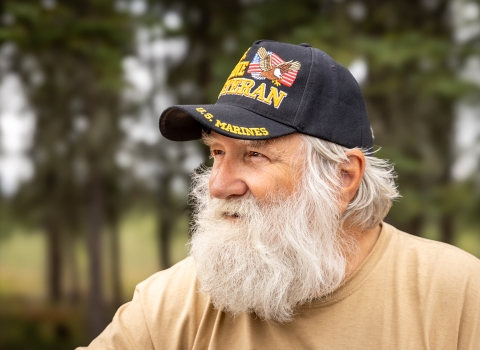Hi! My name is Agustin Rodriguez, but my friends call me Jaime. I’m an Engine Captain at Sacramento National Wildlife Refuge in California. I grew up in a Spanish speaking household, and because of that I am fluent in Spanish and English. Being bilingual has provided me with some incredible opportunities, like when I assisted with a Prescribed Fire Training Exchange (TREX) in Spain or when I was mobilized to Canada to assist with the wildfire crisis in 2023 and was paired with a fire crew from Mexico to serve as a translator.
Generally, Prescribed Fire Training Exchanges (TREX) address one of the most fundamental ways to shift fire culture: giving more people the opportunity to work with fire. TREX provides experiential training that builds robust local capacity for fire management and offers fire practitioners a more holistic perspective—while implementing treatments that support community and landscape objectives.
TREX provides a unique cooperative burning model that services the needs of diverse entities, including federal and state agencies, private landowners and contractors, tribes, academics, and international partners—while incorporating local values and issues to build the right kinds of capacity in the right places.
In February 2024, I had another opportunity to join a TREX training, this time as a participant in the first European Traditional TREX which was held in Portugal. The focus of this TREX was special in that it addressed traditional methods of burning. The intent of this session was to learn and understand that fire is a way of life and that traditional methods of burning have been used by native peoples since the discovery of fire.
The training hosted representatives from nine countries including: the United States, Portugal, Spain, Germany, Poland, Guatemala, Mexico, Canada, and Brazil. Each representative brought with them differing levels of fire experience, backgrounds, and knowledge of traditional uses of fire.
During the ten-day training, I assisted in translating materials into English and Spanish for the 40-person group. The presentation was crucial in setting the foundation for understanding the use of fire to promote healthier pastures for domestic and game animals. Additionally, background on the use of prescribed fire for prevention and protection of the Comunidade Intermunicipal do Alto Minho, an administrative division in northern Portugal, was provided during the presentation.
Over the next ten days, the TREX group practiced old-fashioned logging methods using horses. Traditionally, people of the region worked the land using horses and removed timber fuels (dead, downed, and cut timber) from the woods to reduce the need for mechanical treatments. Despite weighing nearly a ton, horses tread lightly, which helps preserve the soil structure structure
Something temporarily or permanently constructed, built, or placed; and constructed of natural or manufactured parts including, but not limited to, a building, shed, cabin, porch, bridge, walkway, stair steps, sign, landing, platform, dock, rack, fence, telecommunication device, antennae, fish cleaning table, satellite dish/mount, or well head.
Learn more about structure in a forest. Strong soil reduces the chances of erosion and creates better growing conditions for native trees and plants.
Tied into this experience was the understanding of how traditional methods of reducing wildfire risk affect different ecosystems and how many of these methods are designed to protect delicate watersheds in the area.
Although this training experience only lasted ten days, the networking, friendship, and shared knowledge will last a lifetime. This experience reinvigorated my desire and passion to help share the tradition of fire use on the landscape. We all come with different experiences, and sharing our stories and traditions will only make us stronger, even when it comes to wildland fire.
